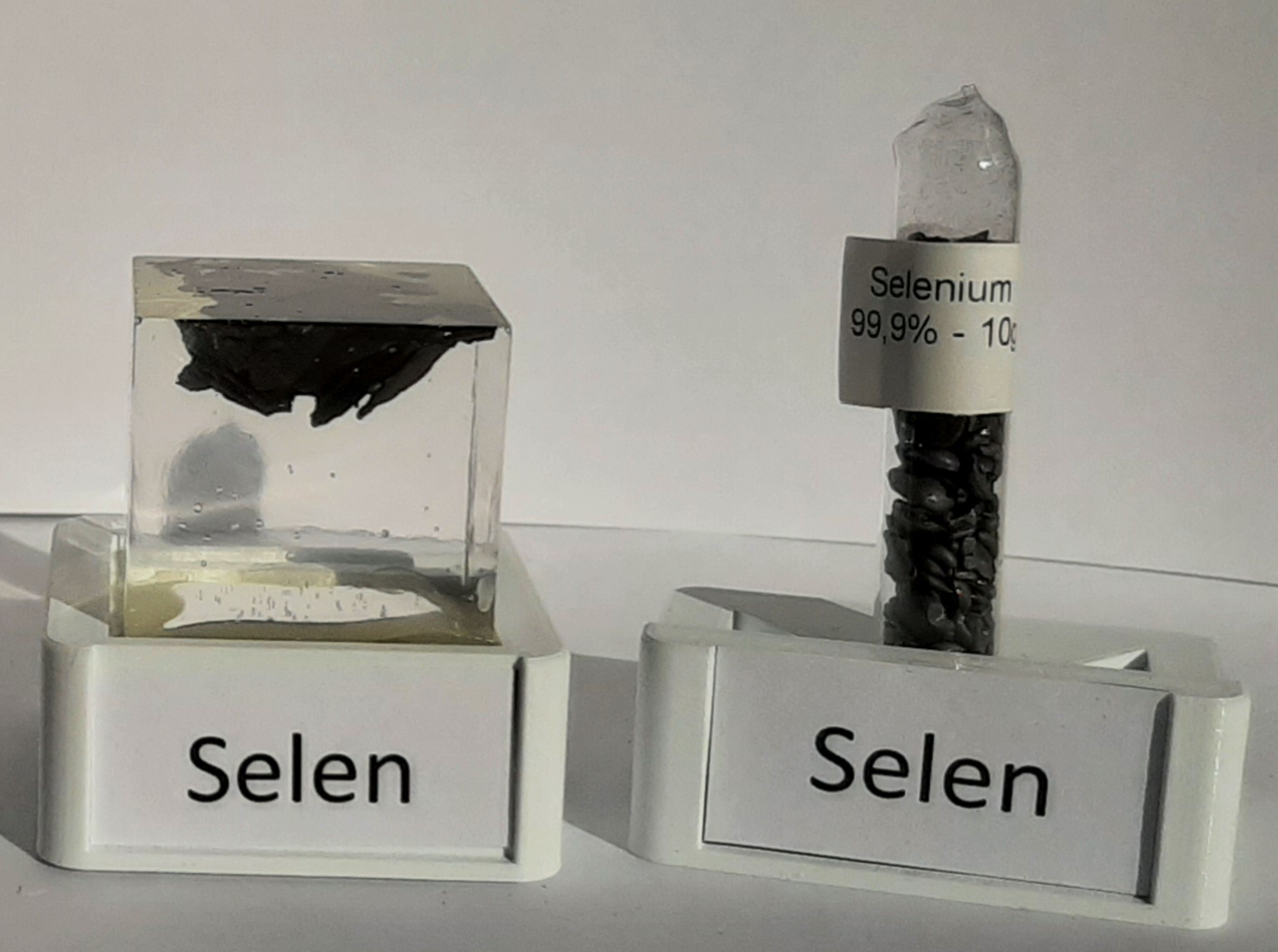
Selenium (from Latin Selenium) Se
Crookesite (mainly found in Sweden), clausthalite (mainly Germany), umangite (Argentina, Germany).
A non-metal, semiconductor, slightly soluble in water but highly soluble in organic solvents, available in various allotropic varieties, the most durable of which is gray selenium. In some chemical reactions, it works as a catalyst (a substance that lowers the activation energy). It is toxic in large quantities, but in appropriate doses it is necessary for the proper functioning of the body.
CuSe, FeSe, PbSe, NiSe, ZnSe, HgSe, SeO2, Na2Se
On an industrial scale, selenium is obtained as a by-product of refining copper ore; from there, selenium oxide is dissolved in nitric acid and then passed through sulfur oxide. Selenium precipitates as a red precipitate, which is an allotropic form of β-selenium.
Selenium is used in the production of LEDs and photocells, it is also used in glass coloring, forming compounds with heavy metals, and can reduce their toxicity. Selenium is added to fertilizers to replenish deficiencies in the soil and improve the level of this element in plants. It has a positive effect on the production of T and B lymphocytes and macrophages, and thus on the functioning of the immune system.
In 2011, approximately 2,000 tons of selenium were produced worldwide, mainly in Germany, Japan, Belgium and Russia.
Due to its antioxidant properties, selenium is sometimes added to cosmetics to help protect the skin from free radicals and other environmental factors. The deficiency of this element increases the risk of hypothyroidism. Selenium is also necessary for the proper synthesis of testosterone. Selenium takes its name from the Greek word "selene", which means "moon". Selenium was discovered jointly in 1817 by Swedish chemists Jöns Jakob Berzelius (1779–1848) and Johan Gottlieb Gahn (1745–1818). Brazil nuts are rich in selenium, even if they grow in soil low in this element. A single nut provides enough selenium to meet the daily requirement of an adult.


